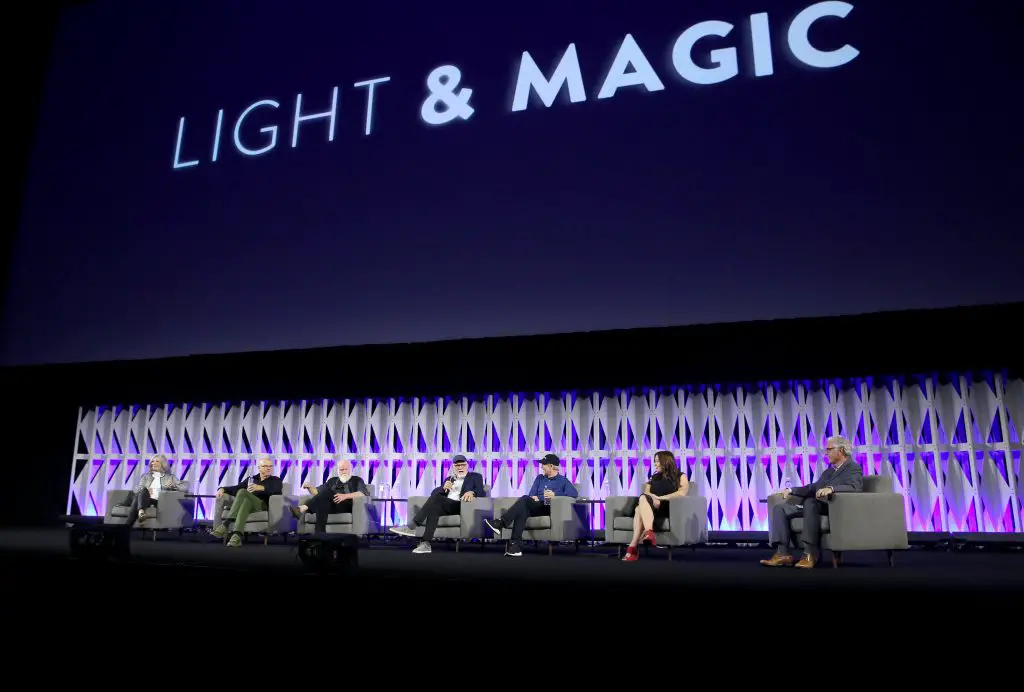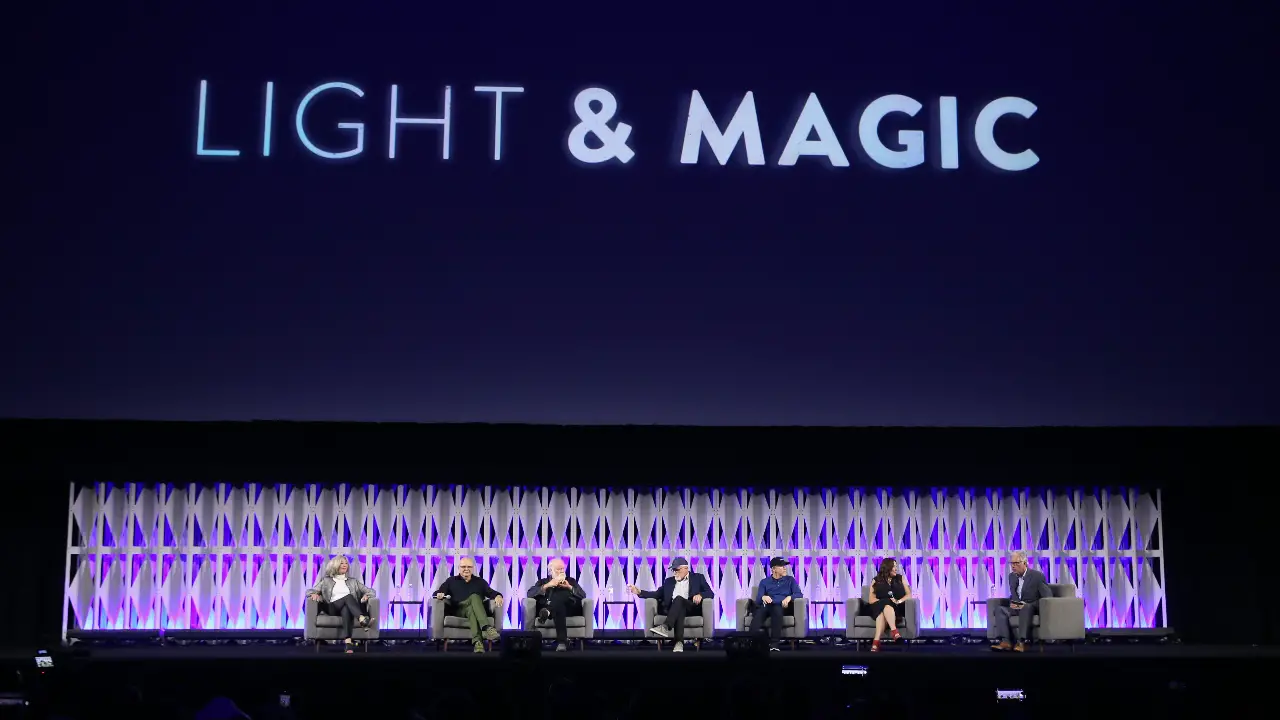Friday at Star Wars Celebration kicked off with a look at the upcoming six-part Disney+ documentary, “Light & Magic,” which will give viewers insight into the fascinating world of filmmaking at Industrial Light & Magic (ILM). Excited fans streamed into the Celebration Stage, ready to hear secrets of the production of Star Wars from those who had been there from the very beginning. The panel was moderated by ABC News’s Chris Connelly and featured director Lawrence Kasdan participating remotely, as well as executive producer Ron Howard, VFX masters Dennis Muren, Phil Tippett, Joe Johnston, and Lucasfilm executive vice president and general manager, Lynwen Brennan.

Although now we think of the Star Wars series as among the greats of film history, it didn’t always have the assurance of success. “Light & Magic” is a documentary that recognizes the people who made this beloved series what it is, united under a ‘can do’ spirit where anything is possible. It took the creativity and passion of the ILM team, representing a diversity of skills and a willingness to take risks, to achieve what we take for granted today as a pinnacle of filmmaking. This crew was brought together by Lucas, who overlaid his singular genius to turn ‘good’ into ‘legendary.’ In those early days, he was fearless in not needing to know how something would be done to know that it could be.
Ron Howard shared that Lucas focused on building an atmosphere and a world through his films, which was a different approach from many other directors. In “American Graffiti,” Howard remembered that the selection of the cars in the film was just as important as choosing the actors since the cars were essential to the world of 1950s “cruising” culture that made up the film. This automotive experience translated directly into “A New Hope” through the design of the ships. Rebel space crafts were intended to feel like hot rods: patched together with spare parts, but still the fastest hunks of junk in the galaxy. Empire ships were supposed to evoke that “new off the factory floor” feeling, reinforcing the dark side’s power and resources. When designing, the world influenced the ships’ motion and speed, which led to the final forms.
As mentioned by Lawrence Kasdan, Lucas’s skill was in knowing what to ask of people so that they could achieve their best work. He prompted his crew in an open-ended way that would inspire them but wouldn’t overwhelm their creativity. Lucas didn’t give input until he picked the final version. For example, it became apparent that Han Solo’s ship would need to be revamped when a similar design was spotted in a competitor’s film. Lucas only told his artists that some completed pieces like the radar dish had to be incorporated, but not how that should be done. The Millennium Falcon we know today was inspired by plates in a sink of dirty dishes, positioned to look like a flying saucer. The artist knew that Lucas would want multiple options, and realized he needed to create multiple versions so his favorite would be selected. His method worked, and the saucer design was chosen.
Ultimately, Star Wars was made to be wholesome entertainment for children and families. Rose Duignan pointed out that Lucas wrote these stories for his grandchildren, and envisioned a 12-year-old as his prime audience. He wanted to reinforce the theme of selflessness versus selfishness, injecting truth as the primary moral. The panelists confirmed that this feeling was present among the crew as well. The team came together in times of challenge, helping each other when deadlines were missed or a task seemed impossible. Even though this wasn’t normally part of the Hollywood system, ILM put the spirit of the films into practice and took collaboration to a new level. It is not hard to see that the attitude of teamwork and selflessness fed back into the final product, making both the team and the film stronger.
“Light & Magic” was made by the people who know Star Wars best, and have a unique viewpoint from which to share the history of these films and the individuals who made them. If Friday’s preview is any indication, Star Wars fans will enjoy this inside look at this beloved classic.























































